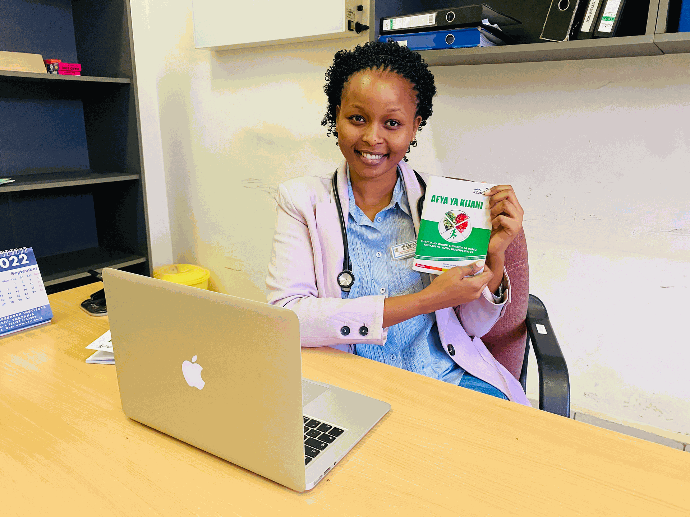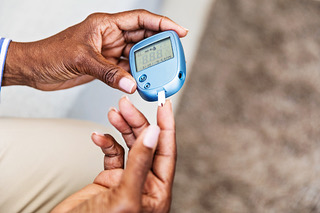
What is Diabetes Mellitus?
Diabetes is a chronic, metabolic disease characterized by elevated levels of blood glucose (or blood sugar). It occurs either when the pancreas does not produce enough insulin or when the body cannot effectively use the insulin it produces.
Insulin is a hormone that regulates blood glucose. Hyperglycemia, also called raised blood glucose or blood sugar is a common effect of uncontrolled diabetes and over time may lead to serious complications like:
-
Stroke
-
Kidney insufficiency and failure.
-
Loss of vision/sight and blindness.
-
Peripheral neuropathies.
-
Chronic limb ulcers and amputations.
-
Loss of libido among women.
-
Erectile dysfunction.
-
Recurrent skin infections, Urinary tract infections and Tuberculosis.
About 422 million people worldwide have diabetes, with the majority living in low- and middle-income countries. 1.5 million deaths are directly attributed to diabetes each year. Both the number of cases and prevalence have been steadily increasing over the past few decades.
What are the major types of Diabetes Mellitus?
Type 1 Diabetes.
Type 1 (previously known as insulin- dependent, juvenile or childhood onset) is characterized by deficient insulin production and requires daily insulin administration. Neither it’s cause nor the means to prevent it are known.
Type 2 Diabetes.
Type 2 (formerly called non-insulin-dependent, or adult onset) results from the body’s ineffective use of insulin. More than 95% of people with diabetes have type 2 diabetes. This type of diabetes is largely the result of excess body weight and physical inactivity.
Until recently, this type of diabetes was seen only in adults but it is now also occurring increasingly frequently in children.
What are the symptoms of Diabetes Mellitus?
Diabetic symptoms may occur suddenly or may be diagnosed several years after the onset, after complications have already arisen. Thus, it is advised to have regular blood sugar tests for early detection. Symptoms mainly depend on the level and time blood sugar has been abnormally high.
Symptoms include: -
-
Thirst (polydipsia)
-
Constant hunger(polyphagia)
-
Weight loss
-
Vision changes
-
Fatigue
-
Delayed wound healing (chronic ulcers)

What is/are the normal ranges of blood sugar?
The normal 8 hours-fasting blood sugar ranges below 7 mmol/L or 126 mg/dl, while randomly/ 2 hours after meal ranges below 11 mmol/L or 200 mg/dl. When the measured blood sugar is below 3.5 mmol/L (in people without diabetes) or below 3.9 mmol/L (in patients with diabetes), it’s called low blood glucose or Hypoglycemia. Hypoglycemia is an emergency, and its treatment aims to correct blood sugar to normal by feeding sugar added drinks or sometimes medications.
Causes of low blood sugar/ Hypoglycemia.
-
Increasing your insulin dose or other oral blood sugar lowering medications.
-
Skipping meals or not eating at all.
-
Taking your medications regularly without eating.
-
Vigorous exercises without eating.
-
Excessive alcohol intake
Hypoglycemia can be fatal if no intervention/ treatment is made immediately. It is important to take measures promptly once the diagnosis is made.
Patient(s) who haven’t lost their consciousness are advised to give them half cup of soda or juice or honey or a full spoon of sugar. Those who have lost consciousness should not be given to prevent risk of choking (aspiration), instead they should be taken to the nearby health facility for immediate care.
Diagnosis and Treatments.
Early diagnosis can be accomplished through relatively inexpensive testing of blood glucose.
Treatment of diabetes involves lifestyle measures such as following a balanced diet, physical activities, regular prescribed medication(s), alcohol moderation, tobacco cessation along with lowering of blood glucose and the levels of other known risk factors that can damage blood vessels.
Interventions that can be both serving and feasible during a clinic follow up includes: -
- Blood glucose control
- Blood pressure control
- Foot care
- Screening and treatment of retinopathy (which causes blindness)
- Blood lipids control (to regulate cholesterol levels)
- Screening for early signs of diabetes- related kidney disease and treatment.
How should I take care of my feet once I have diabetes mellitus?
Long Standing/ chronic untreated high blood sugar (Hyperglycemia) causes damage to the peripheral blood vessels and it’s the leading cause of chronic ulcers. A small wound in diabetic patients may progress to large-extended chronic ulcers leading to amputation. Footcare is crucial to patients with diabetes to prevents such complications; some of the ways are
-
Feet should be inspected daily, looking for areas of blisters, swellings, callus or nails deformities.
-
Avoid wearing closed shoes, open shoes are preferred.
-
Avoid wearing tight shoes.
-
Use shoes with soft soles, avoid hard soles shoes.
-
Use good soled shoes which will prevent pierced/ sharp instruments.
-
Wash and dry your feet gently, avoid scratching them.
-
Trim your nails carefully.
-
Wear clean, dry and loose socks, preferred cotton ones.
-
Inspect your shoes before wearing them
-
Make sure your feet are dry all the time.
-
Avoid walking bare feet.
-
Stop cigarette smoking.
-
Regular feet examinations by health care professional
Having close and regular blood sugar follow ups is the main among management of diabetes in preventing or delaying the onset of the fore-mentioned complications, along side having a balanced/ diabetic diet , recommended physical exercises , regular use of prescribed medications, moderate alcohol consumption and smoking cessation.
With persistent high blood glucose (Hyperglycemia) in spite of the mentioned interventions, you're free to consult our GreenVit Health team via the contacts given for further assistance.
We are looking forward to empowering you to live a healthy life, fighting against Non-communicable Diseases (NCDs) including Diabetes.